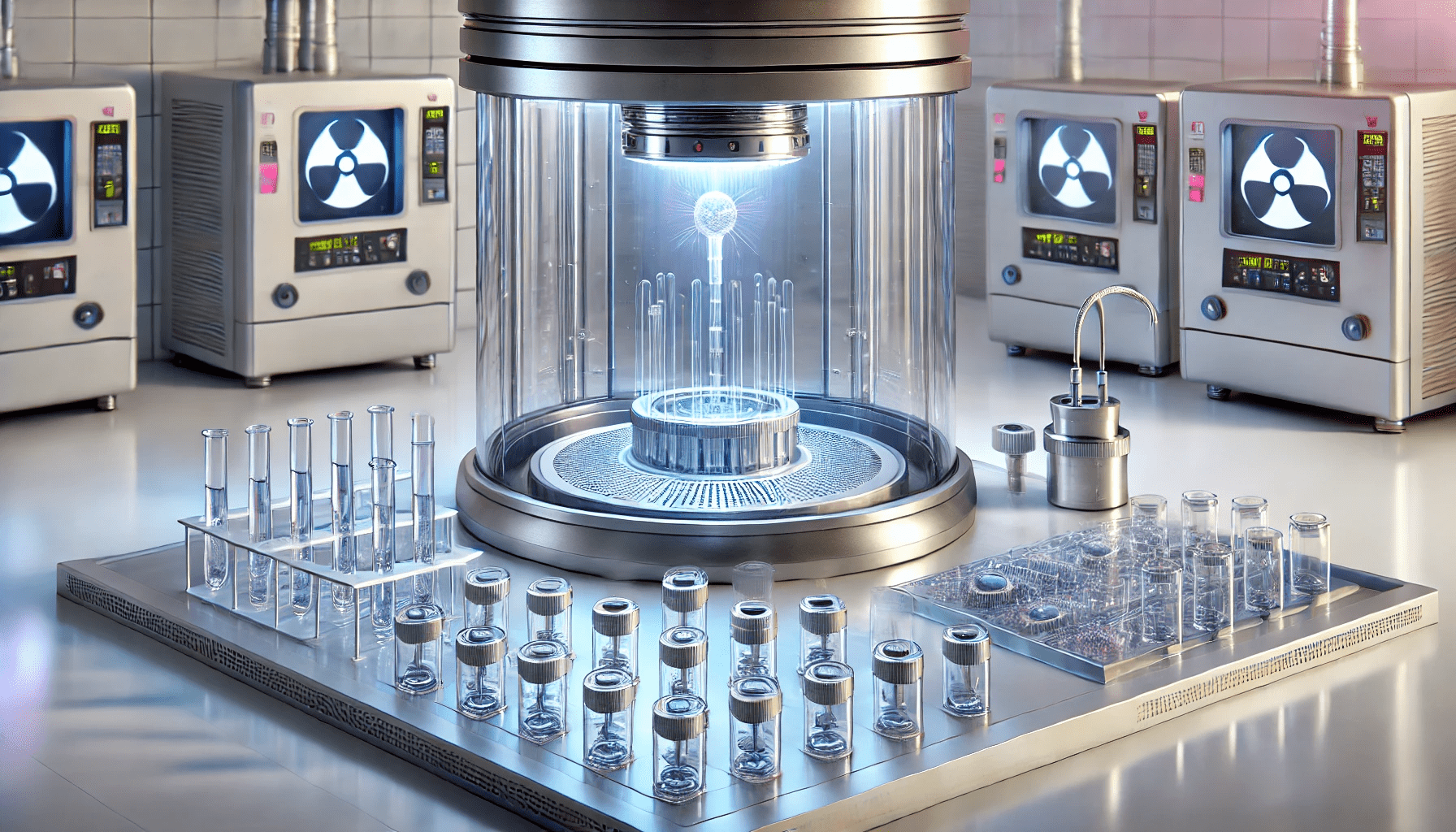Gamma Irradiation (γ-irradiation) is a highly effective sterilization method, particularly suitable for materials that are sensitive to both heat and moisture. It is commonly used in medical, biological, and microfluidic applications because it ensures sterility without subjecting materials to high temperatures.
During gamma irradiation, materials are exposed to high-energy gamma rays in a controlled setting. These rays penetrate the material and disrupt the DNA of microorganisms, effectively sterilizing the items. Since it is a non-thermal method, gamma irradiation is particularly well-suited for sterilizing delicate materials that cannot endure high heat or steam-based sterilization processes. Despite its effectiveness, careful post-irradiation handling is essential to mitigate any potential material degradation caused by radiation exposure.
To assist engineers and researchers in evaluating the behavior of various materials under gamma irradiation, the following comprehensive chart, derived from sources like Qosina, Idex, and Industrial Specialties Mfg., offers compatibility ratings.
Refer to this table to make informed choices and maintain contamination-free experiments.
💡 The sterilization compatibility rating key is as follows:
- Good = Little to No Effect
- Fair = Slight to Moderate Effect
- Poor = Moderate to Severe Effect (Not Recommended)
🚨 This chart is intended for informational purposes only and should not be considered as a guarantee of material performance in sterilization or other uses. Users are responsible for evaluating the appropriateness of materials and processes for their specific applications, taking into account both technical and legal considerations.
☢️ Gamma Irradiation: Sterilization Compatibility Chart
| Material | Gamma Irradiation |
|---|---|
| Aluminum | Good |
| Cyclo Olefin Copolymer (COC) | Good |
| Cyclo Olefin Polymer (COP) | Good |
| Ethylene Chlorotrifluoroethylene (ECTFE) | Good |
| Ethylene Propylene Diene Monomer (EPDM) | Good |
| Ethylene Tetrafluoroethylene (Tefzel - ETFE) | Good |
| Fluorinated Ethylene Propylene (FEP) | Fair |
| High Density Polyethylene (HDPE) | Good |
| High Density Polypropylene (HDPP) | Good |
| High Heat Polycarbonate (PC) | Good |
| Linear Low Density Polyethylene (LLDP) | Good |
| Low Density Polyethylene (LDPE) | Good |
| Neoprene | Good |
| Olefinic Thermoplastic Elastomer (TPO) | Good |
| Perfluoro Alkoxy (PFA) | Good |
| Perfluoroelastomer (FFKM) | Good |
| Polyamide (Nylon) | Fair |
| Polyamide Thermoplastic Elastomer (TPA) | Good |
| Polycarbonate (PC) | Good |
| Polychlorotrifluoroethylene (PCTFE) | Good |
| Polydimethyl Siloxane (PDMS) | Good |
| Polyetheretherketone (PEEK) | Good |
| Polyethylene (PE) | Good |
| Polymethyl Methacrylate (PMMA) | Good |
| Polyoxymethylene (Delrin) | Poor |
| Polyphenylene Sulfide (PPS) | Good |
| Polyphenylsulfone (PPSU) | Good |
| Polypropylene (PP) | Fair |
| Polystyrene (PS) | Good |
| Polysulfone (PSU) | Good |
| Polytetrafluoroethylene (PTFE) | Poor |
| Polyurethane (PU) | Good |
| Polyvinyl Chloride (PVC) | Good |
| Polyvinyl Chloride (Unplasticized - PVC) | Fair |
| Polyvinyl Fluoride (PVF) | Good |
| Silicone | Good |
| Stainless Steel 316 | Good |
| Thermoplastic Polyolefin (TPO) | Good |
| Thermoplastic Polyurethane (TPU) | Good |
| Ultrahigh Molecular Weight Polyethylene (UHMWPE) | Good |


